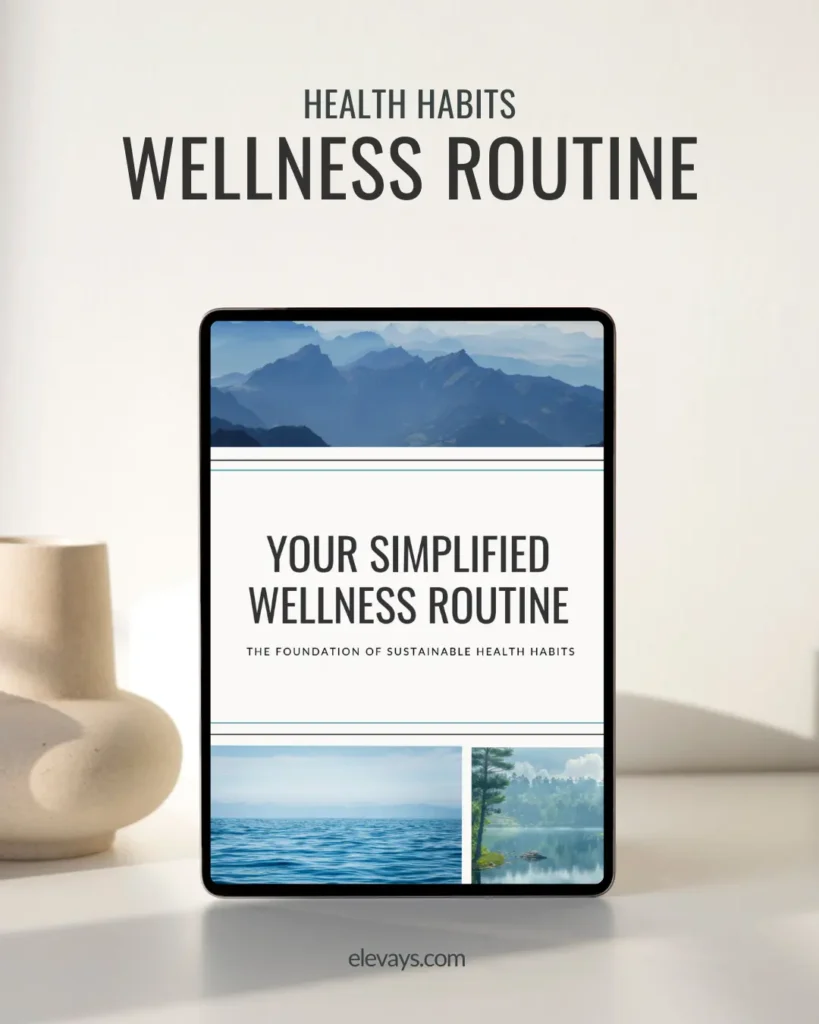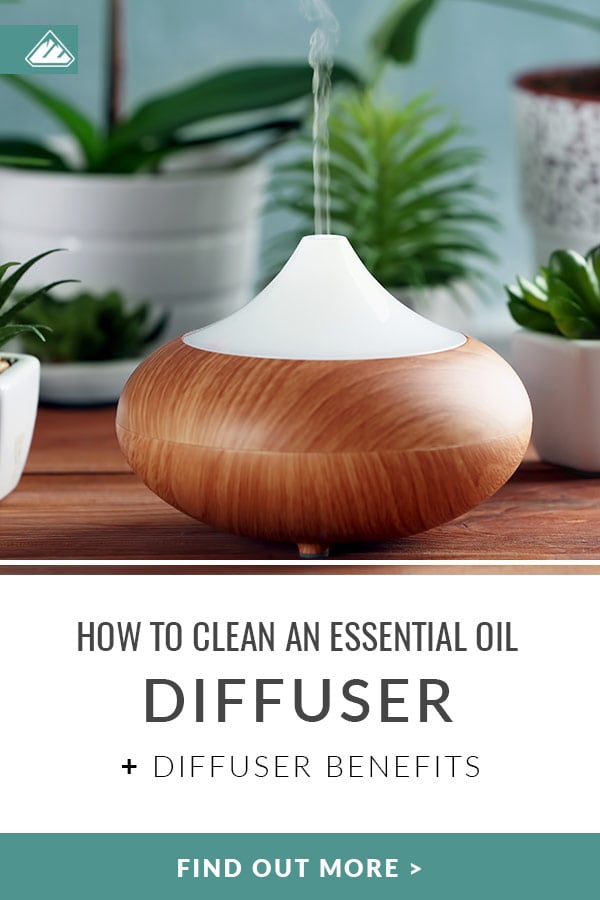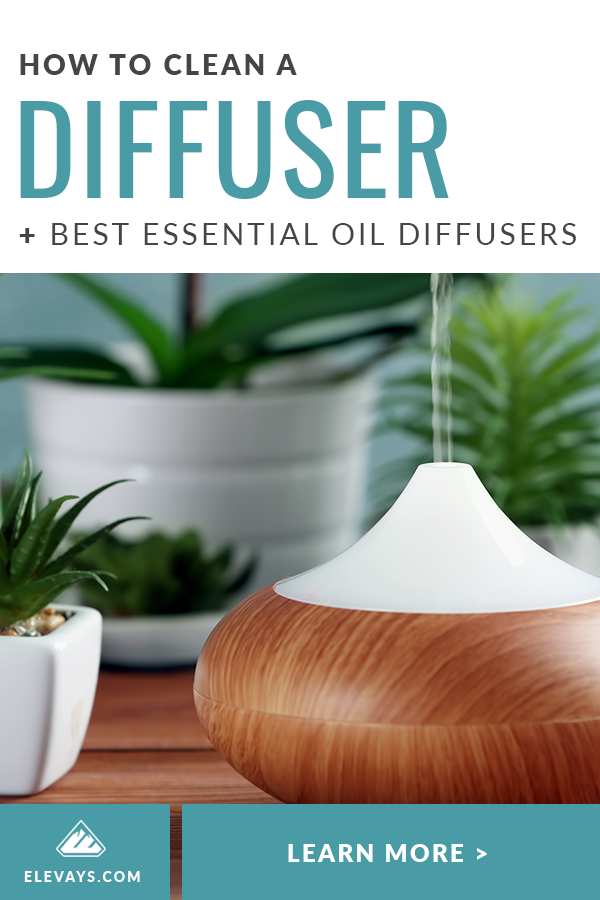If you’re new to aromatherapy or using essential oils, you may find that a diffuser is a perfect way to get started. Diffusing essential oils into your environment can promote relaxation, and you can gain benefits from the oils with little to no work.
However, the elbow grease comes in later.
You must regularly clean the diffuser for the best results, and the amount of time you spend on maintenance varies based on the diffuser type you select. In this post, I’ll show you how to find and adequately care for the right diffuser.
TRUTH BOMB:
You’re
Already killing it!
If You Were More Consistent With Your Wellness Routine, You’d Be Unstoppable.
Do Essential Oils Work?
There may be conflicting information out there about the efficiency of essential oils. They don’t work the same for everyone. However, they’re an excellent, natural way to impact your health and overall well-being. Quality essential oils may help boost your mood and energy or treat a wide array of ailments.
The best way to start using essential oils for therapeutic benefits is through aromatherapy. A diffuser is easiest for beginners because all you do is place a few drops and some water in the machine, turn it on, and walk away.
How Do Diffusers Work?
You may be wondering, “how does a diffuser work?”
Diffusers disperse essential oils into the air around you using either steam, air, or heat. They are sleek machines, and they create a chill in the room that’s filled with a fantastic aroma and tons of health perks. It’s an all-natural aromatherapy technique and an excellent alternative to toxic air fresheners and scented candles.
Most essential oil diffusers use aromatherapy and water to work. Simply add both water and a few drops (around 10) of your essential oil of choice to the water container. Plug in the machine and turn on the power to emit the oil-infused mist.
The amount of oil and water you add may depend on the water capacity of your diffuser and the oil you select. Check your machine for specific care instructions. Distilled or filtered water is ideal over tap water too, as it contains fewer chemicals (1).
Are Diffusers Safe?
They’re trendy, but are essential oil diffusers safe? Experts claim so. Some people can have severe allergic or asthmatic reactions, however, and children may be susceptible to harm from some essential oils. The machine itself is not toxic, but this also depends on what material your diffuser is made from.
The biggest downside to most wholesale diffusers is that they’re often made from plastic, which can alter the quality of the essential oils you use and negatively affect the results. Plastic and wholesale essential oil diffusers are not as safe because the material can corrode with essential oil use (especially citrus oils), making you purchase a new machine more often.
Clay and wooden oil diffusers are among the safest options over plastic.
Benefits of Diffusers
Not only are essential oil diffusers safe and comfortable for beginners to use, but they also come with tons of perks. Multiple studies prove the benefits of essential oil diffusers in aromatherapy (2), including:
- Lower stress
- Uplifts mood
- Increases energy
- Purifies the air
- Improved mental clarity
- Calms and promotes sedative effects
How to Clean Various Types of Diffusers
Cleaning is vital for maintaining a well-working diffuser. How you clean a diffuser may depend on the model you have. Essential oil diffusers come in three popular types: ultrasonic, heat, and nebulizing diffuser options.
You’ll need to clean your diffuser around once a week or per month, depending on how often you use the machine. Wipe off the device after you switch to another essential oil to keep up with mold build-up or cross-contamination as well.
Ultrasonic/Humidifying Diffusers
The most common type of essential oil diffuser is an ultrasonic unit (especially during the winter), which creates vibrations in the water and produces a fine mist of essential oils and water into the air. There are also diffuser-humidifier combinations available.
To clean these diffusers, unplug the unit and drain all liquid. Wipe off the diffuser with soap and water, without getting the electrical pieces wet. Rinse thoroughly and dry the machine before plugging it back in. You can also use lemon essential oil or rubbing alcohol to tackle hard-to-clean residue.
For a deep clean or a doTerra diffuser, try running your diffuser half-full of water with 10 drops of pure white vinegar. Any oils stuck inside the diffuser will remove themselves in around 3-5 minutes. Dab the edges of the water reservoir and ultrasonic mist chip with a cotton ball soaked with white vinegar. Just make sure to rinse and dry the diffuser afterward.
Essential Oil Nebulizer
The best option for ample space, an essential oil nebulizer uses oil alone in the diffuser. Rather than mixing with water or heat, the nebulizer works by atomizing the oil to fill the room with airborne particles and aroma. Most essential oil diffuser nebulizers attach directly to the essential oil bottle, and you flip the switch to turn on the machine. They don’t have lights, which is excellent for blocking blue light at night, but they can be louder and pricier than a more common ultrasonic unit.
Cleaning nebulizer essential oil diffusers are much more manageable. To deep clean nebulizing essential oil diffusers (like the Aroma-Ace essential oil diffusers doTerra makes), remove the essential oil bottle and unplug the unit. Submerge the entire quick-change top in rubbing alcohol for around 30-60 minutes and then wipe the machine clean with a dry towel.
Car Diffuser
Smaller options perfect for on-the-go, car essential oil diffusers use tiny amounts of water with 1-3 drops of essential oil to work. Some options also heat essential oils similar to a candle oil warmer, but the process isn’t as effective. Heat can reduce some types of oils’ effectiveness.
Because large diffusers aren’t ideal while driving, these little car essential oil diffusers are like the full-size ultrasonic machines. They plug into the USB connection in your vehicle for power rather than an electrical outlet. The result is a gorgeous scent throughout the car without much moisture.
Clean an in-car essential oil diffuser every 3 days or so. Disconnect the diffuser from the power source, and use a cloth or cotton swab to clean the water tank and exterior with water. To clean the wick, you’ll need to remove it from the cartridge and allow it to sit in a cup of alcohol for 15-30 minutes. Allow the wick to dry before using the diffuser again.
The Best Essential Oil Diffusers
When it comes to non-toxic essential oil diffusers, doTerra is my favorite. It’s the best company for 100% safe products, and doTerra’s essential oils are organic and certified by a third party for authenticity.
Top-Rated Essential Oil Diffusers
If you’re looking for top-rated essential oil diffusers, Amazon offers a few excellent options. There, you can find a wide range of wholesale essential oil diffusers. Here are a few of my favorites:
Think About Cleanliness Before You Buy
Before you buy a diffuser for essential oils, consider where you want to place the machine and what oils you usually use. If you don’t have tons of time to clean a diffuser, for example, an ultrasonic machine may not be ideal for you. The best essential oil diffuser you choose may vary, based on your needs.
Sources:
- What’s in your drinking water? Retrieved from: http://freshlysqueezedwater.org.uk/waterarticle_watercontent.php
- PDQ Integrative, Alternative, and Complementary Therapies Editorial Board. (2005). Aromatherapy With Essential Oils. Retrieved from: https://www.ncbi.nlm.nih.gov/books/NBK65874/







READ the Latest
Longevity
Health Habits
Health Habits
Longevity